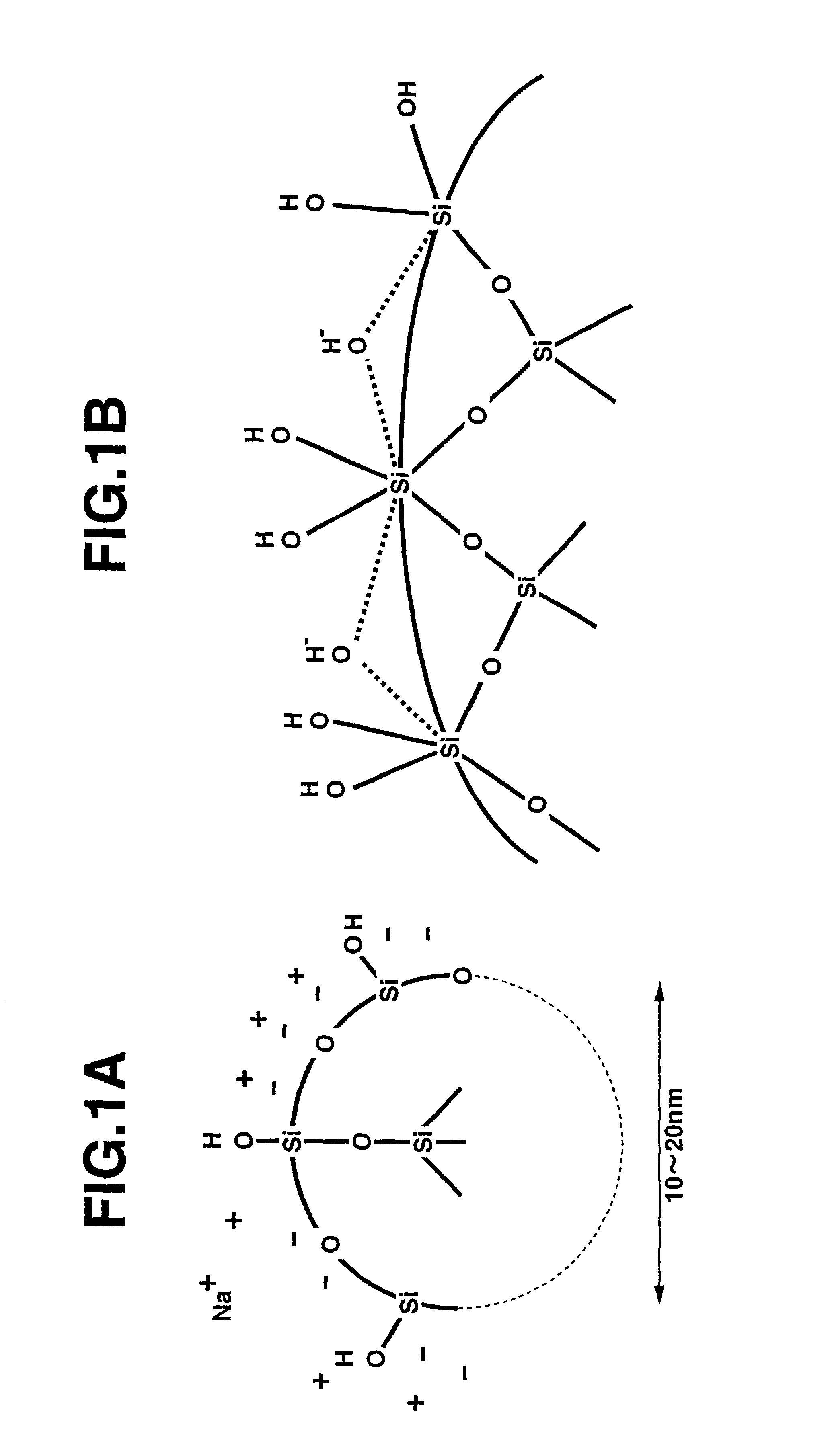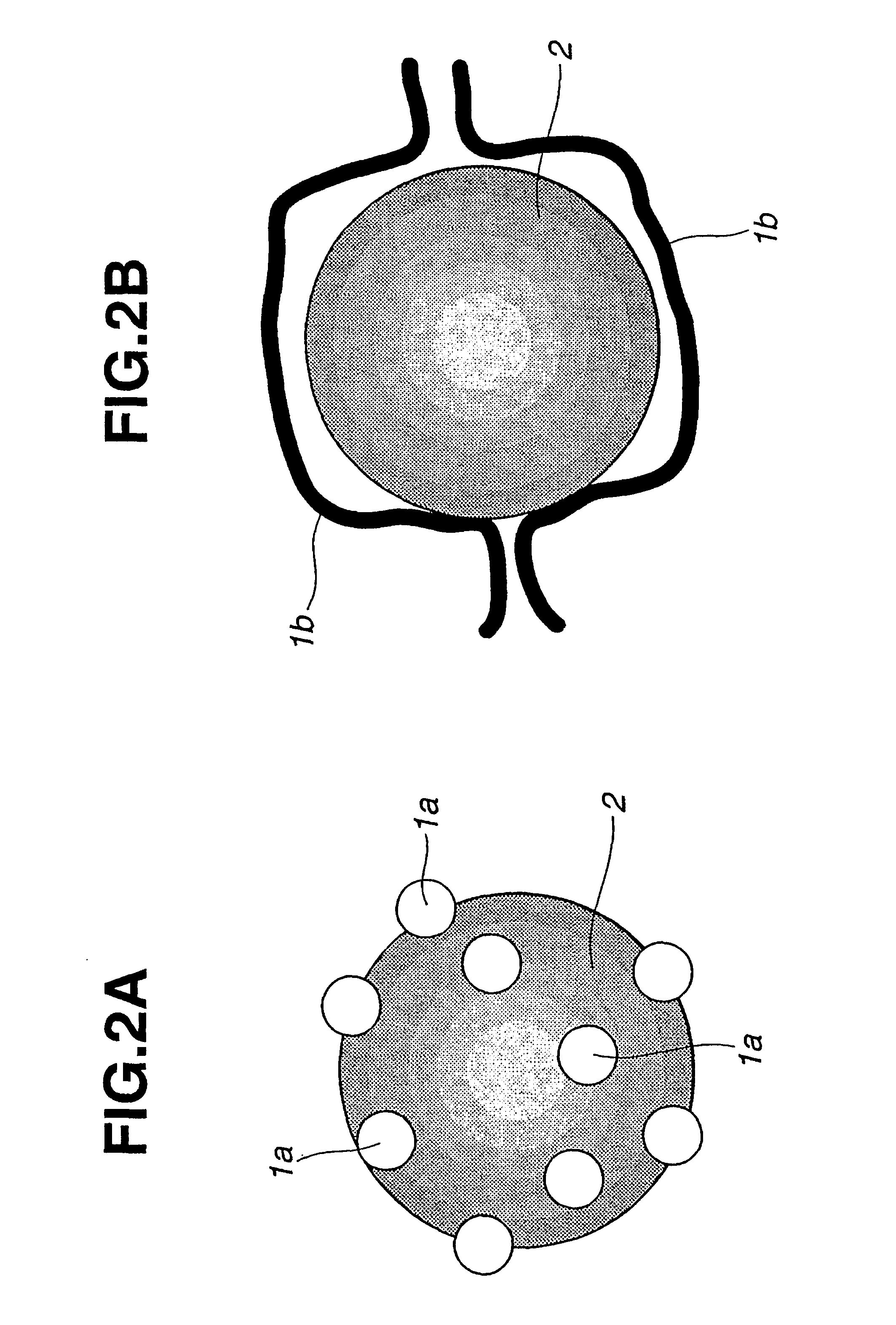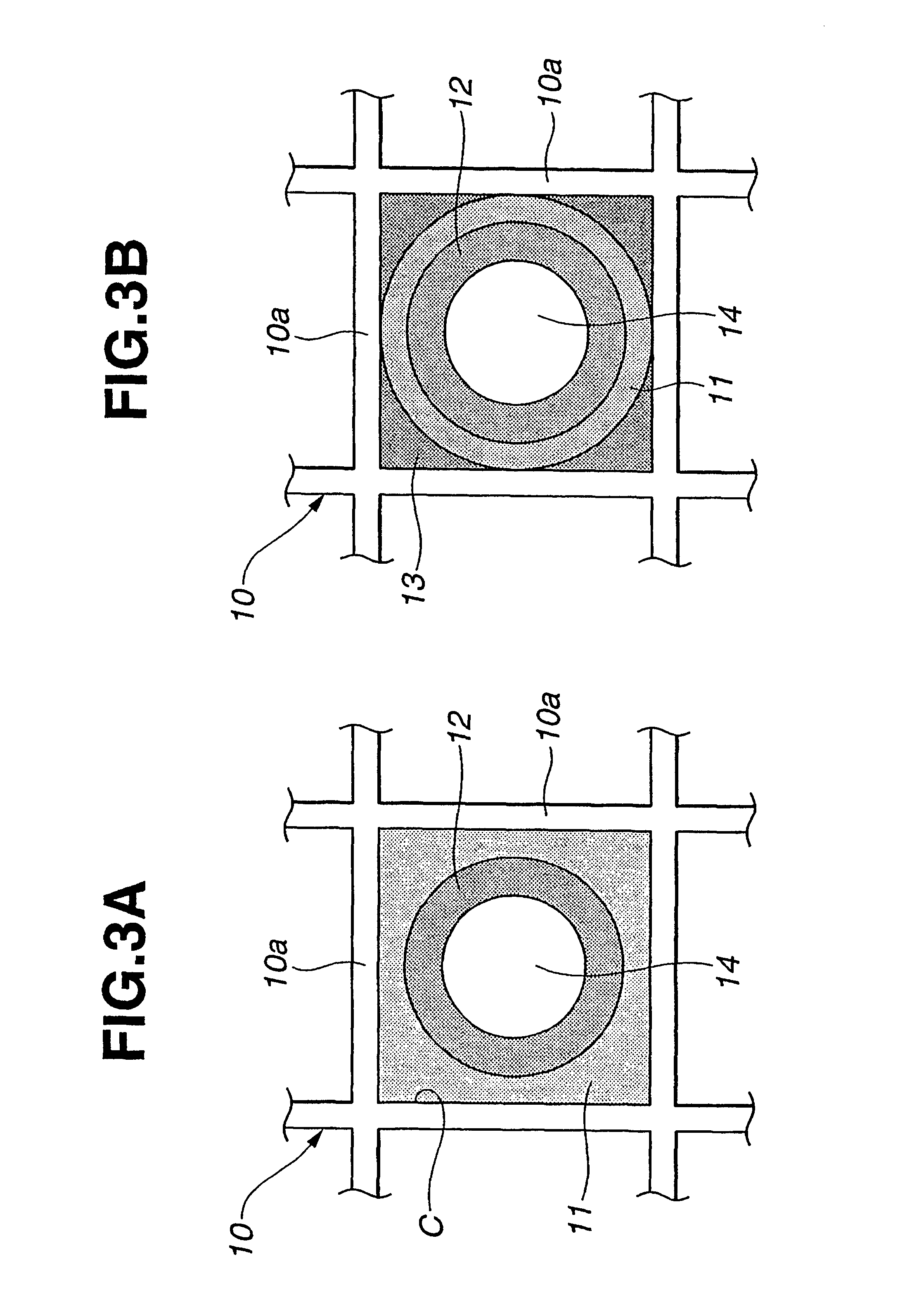Exhaust gas purifying catalyst and method of producing same
a technology of exhaust gas purification and purification catalyst, which is applied in the direction of physical/chemical process catalyst, metal/metal-oxide/metal-hydroxide catalyst, and separation process, etc., can solve the problem that the adsorption catalyst cannot function as an exhaust gas purification catalyst, the oxidizing efficiency of the released hc is sharply lowered, and the production cost of the system increases. , to achieve the effect of purifying exhaust gas for a long time period
- Summary
- Abstract
- Description
- Claims
- Application Information
AI Technical Summary
Benefits of technology
Problems solved by technology
Method used
Image
Examples
example 1
A porcelain ball mill was charged with 475 g of .beta.-zeolite powder (Si / 2Al=50), 125 g of colloidal silica (having a solid content of 20% by weight and having a trade name of ST-UP and produced by Nissan Chemical Industries, Ltd.) whose particles were chain and whose average particle size was within a range of from 40 to 100 nm, and 1000 g of pure water, followed by mixing and pulverization, thereby obtaining a slurry. This slurry was coated on a cordierite ceramic honeycomb-type monolithic substrate having a volume of 1.3 liters, 600 (axially extending) cells per square inch and having a thickness of walls (defining each cell) of 4 mil, so that thin walls of cells were coated with the slurry. Thereafter, the coated monolithic substrate was blown with air stream to remove excessive slurry in the cells, and dried and then fired at 400.degree. C. for 1 hour, thereby forming a coat layer (zeolite-base layer). The above procedure from coating to calcining was repeated until the weight...
example 2
A porcelain ball mill was charged with 400 g of .gamma.-alumina, 1000 g of nitric acid-acidic alumina sol (prepared by adding 10% (wt) nitric acid to 10% by weight of boehmite alumina) and 500 g of pure water, followed by mixing and pulverizing, thereby obtaining a slurry. This slurry was coated on a cordierite ceramic honeycomb-type monolithic substrate having a volume of 1.3 liters, 600 (axially extending) cells per square inch and having a thickness of walls (defining each cell) of 4 mil, so that thin walls of cells were coated with the slurry. Thereafter, the coated monolithic substrate was blown with air stream to remove excessive slurry in the cells, and dried and then fired at 400.degree. C. for 1 hour, thereby forming a coat layer (alumina-base layer). The above procedure from coating to calcining was repeated until the weight of the coat layer became 100 g per one liter of the monolithic substrate after calcining. Thus, a catalyst 2a was prepared.
A porcelain ball mill was c...
example 3
An exhaust gas purifying catalyst of Example 3 was produced by repeating the procedure of Example 1 with the exception that 450 g of .beta.-zeolite powder (Si / 2Al=25), 200 g of colloidal silica (having a solid content of 20% by weight and having a trade name of ST-UP and produced by Nissan Chemical Industries, Ltd.) whose particles were chain and whose average particle size was within a range of from 40 to 100 nm, and 50 g of colloidal silica (having a solid content of 20% by weight and having a trade name of ST-O and produced by Nissan Chemical Industries, Ltd.) whose particles were spherical and whose average particle size was within a range of from 10 to 20 nm were used in place of .beta.-zeolite powder and colloidal silica in Example 1.
PUM
| Property | Measurement | Unit |
|---|---|---|
| particle size | aaaaa | aaaaa |
| specific surface area | aaaaa | aaaaa |
| particle size | aaaaa | aaaaa |
Abstract
Description
Claims
Application Information
 Login to View More
Login to View More - R&D
- Intellectual Property
- Life Sciences
- Materials
- Tech Scout
- Unparalleled Data Quality
- Higher Quality Content
- 60% Fewer Hallucinations
Browse by: Latest US Patents, China's latest patents, Technical Efficacy Thesaurus, Application Domain, Technology Topic, Popular Technical Reports.
© 2025 PatSnap. All rights reserved.Legal|Privacy policy|Modern Slavery Act Transparency Statement|Sitemap|About US| Contact US: help@patsnap.com



